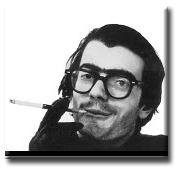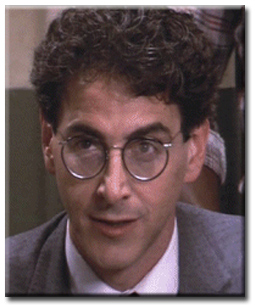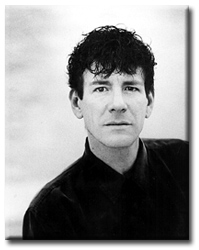The Chicago Comedy Guide proudly pays tribute to the Guru of improv, Mr. Del Close. While the general public knew little of him, Del is often considered be a patron saint to improvisors. Considering that he thought of himself as a warlock, anything is possible.

Leaving his home in Kansas at an early age to join a traveling side show, could there be any doubt that he would lead an interesting life? Joining the Compass Players, he followed them from St. Louis to New York. There, Del Close developed a stand-up and Broadway career as well as creating the classic album How to Speak Hip, while fellow cast members Mike Nichols and Elaine May began to get their own notoriety.
While he moved to Chicago in 1960 to perform and direct at The Second City, he moved to San Francisco after being fired for substance abuse. Both Chicago and substance abuse will continue to be a theme for the rest of his life. In San Francisco for the bulk of the 60s, he became the House Director of The Committee and toured with the Merry Pranksters.
Close became a mainstay of American comedy in the 70's and 80's, though in true Del fashion, never was known himself. Directing at The Second City in Chicago, as well as Toronto at one point, his students flooded the world scene in Saturday Night Live, SCTV and even TV dramas. Once Lorne Michaels left SNL, Del became an artistic director. Allegedly this ended upon an argument about whether an actor should leave space for an imaginary towel when taking an imaginary shower.

He became the house long form improv guru at Improv Olympic. Spending years teaching while also having small parts in seemingly every movie filmed in Chicago at the time (including The Untouchables, Ferris Beuller's Day Off, a League of Their Own, the Blob, and many others) Del was satisfied with periodic stage performances including a play of the Chicago 7 trial. He co-authored the graphic horror anthology Wasteland as well as some of Munden's Bar. But for comedians, he's probably best known as the driving intellectual force behind Truth in Comedy.
Though most believe that his skull can be seen at the Goodman Theatre for use in Hamlet productions, the reality is that his skull was cremated with the rest of him. But the legend lives on, including the "Dell" award that is given out in Chicago, which is in the form of his skull.
His influence can not be overestimated. From Martin de Maat in his childhood seeing Del Close perform to a huge percentage of cast members on SNL influencing the next generation that is still developing, Del continues to live on. Alas, poor Del Close, we knew you...and you will be missed.
Notable students of Del Close include, but are not limited to:
Dan Aykroyd, Jim Belushi, John Belushi, Matt Besser, Brian Blondell, John Candy, Stephen Colbert, Andy Dick, Brian Doyle-Murray, Rachel Dratch, Chris Farley, Tina Fey, Neil Flynn, Peter Fogel, Aaron Freeman, Jon Glaser, Tim Kazurinsky, David Koechner, Jay Leggett, Shelley Long, Brian McCann, Adam McKay, Tim Meadows, Jerry Minor, Bill Murray, Joel Murray, Mike Myers, Joey Novick, Bob Odenkirk, Tim O'Malley, David Pasquesi, Amy Poehler, Gilda Radner, Harold Ramis, Todd Rice, Ian Roberts, Andy Richter, Horatio Sanz, Brian Stack, Miles Stroth, Dave Thomas, Matt Walsh, Stephnie Weir, and George Wendt.

